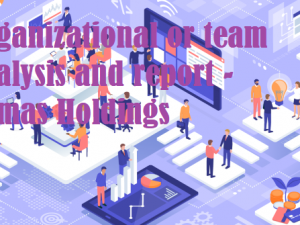| Table of Contents |
1 Introduction
2 Enhancing individual and team performance
2.1 Establishing the set of norms
2.2 Personal attention to each team member
2.3 Defining the goals and objectives
2.4 Clarifying roles and responsibilities
2.5 Providing enough facilities for employees
3 Career development and lifelong learning opportunities in the Health and Social Care sector
4 Techniques for monitoring performance in Health and Social Care
5 Methods for identifying individual training and developing needs
6 Techniques for promoting continuous professional development in health and social care
7 The significance of cultural diversity to the Health and Social Care sector
8 Benefits of a culturally diverse workforce
9 Strategies for managing a diverse workforce
9.1 A super leadership
9.2 Adhering to the components of the diversity
9.3 Encouragement of organizational politics for diversity
9.4 Managing employee retention
9.5 Creation of diverse corporate culture
9.6 Inclusion of ‘diversity’ as a criterion in the performance appraisal reports
10 Conclusion
11 References
|
| Preview |
1 Introduction
Human resources, the one and only live resource in the organization are considered as the engine of any organization. Based on the quality of human resources, quality of organization is determined. How well employees perform in the organization and how far they contribute to achieve organizational goals and objectives of the firm, lead to work towards the vision of the organization (Gaspard, & Yang, Che-Ming, 2016). The Health4All, as a health and social care sector organization, employees including doctors, nurses, and administrative staff members have to always deal with patients. The behavior of one employee can make a huge impact to the arrival of potential patients. Based on the good customer care only, a good patient’s database can be maintained. Not only have that, but also the organization survival in the challenging times such as COVID-19 pandemic also largely depended on the extent to which employees are performing (Latif, 2020).
2 Enhancing individual and team performance
The success of the entire organization depends on both individual performance and team performance. The each individual employee makes an impact to the overall organizational productivity (Latif, 2020). Usually, the process of performance management is time-consuming and costly function. However, the evaluation of employee performance in terms of their output, behavior, results and reactions should be assesses at leads ones per year and then necessary actions should be taken to get the expected performance level from each employee. Throughout the many phases of the performance management process, managers and employees manage goals, evaluate performance, and rate of total. Traditional performance management systems routinely conduct evaluations every quarter, every two years, or every year. A continuous performance management approach includes using performance technology to create and track targets in real time in an open and efficient way as well as to provide ongoing coaching, feedback, and alignment as priorities change over time.
The performance of employees can be enhanced by approaching different strategies as follows.
2.1 Establishing the set of norms
Establishing the set of norms for team’s performance is important. Setting a common to all team system of norms is beneficial for all team member since they all work on a common platform having general rules and regulations. There are typically many unwritten conventions controlling behavior in the workplace. These are easy for a new team member to pick up. Some of these unwritten rules strengthen the positive, while others make it weaker. The best teams work together to develop precise communication guidelines. This puts all doubt to rest. It also promotes consistency and order, which can aid in avoiding misunderstandings. One example of a team standard is this.
|





